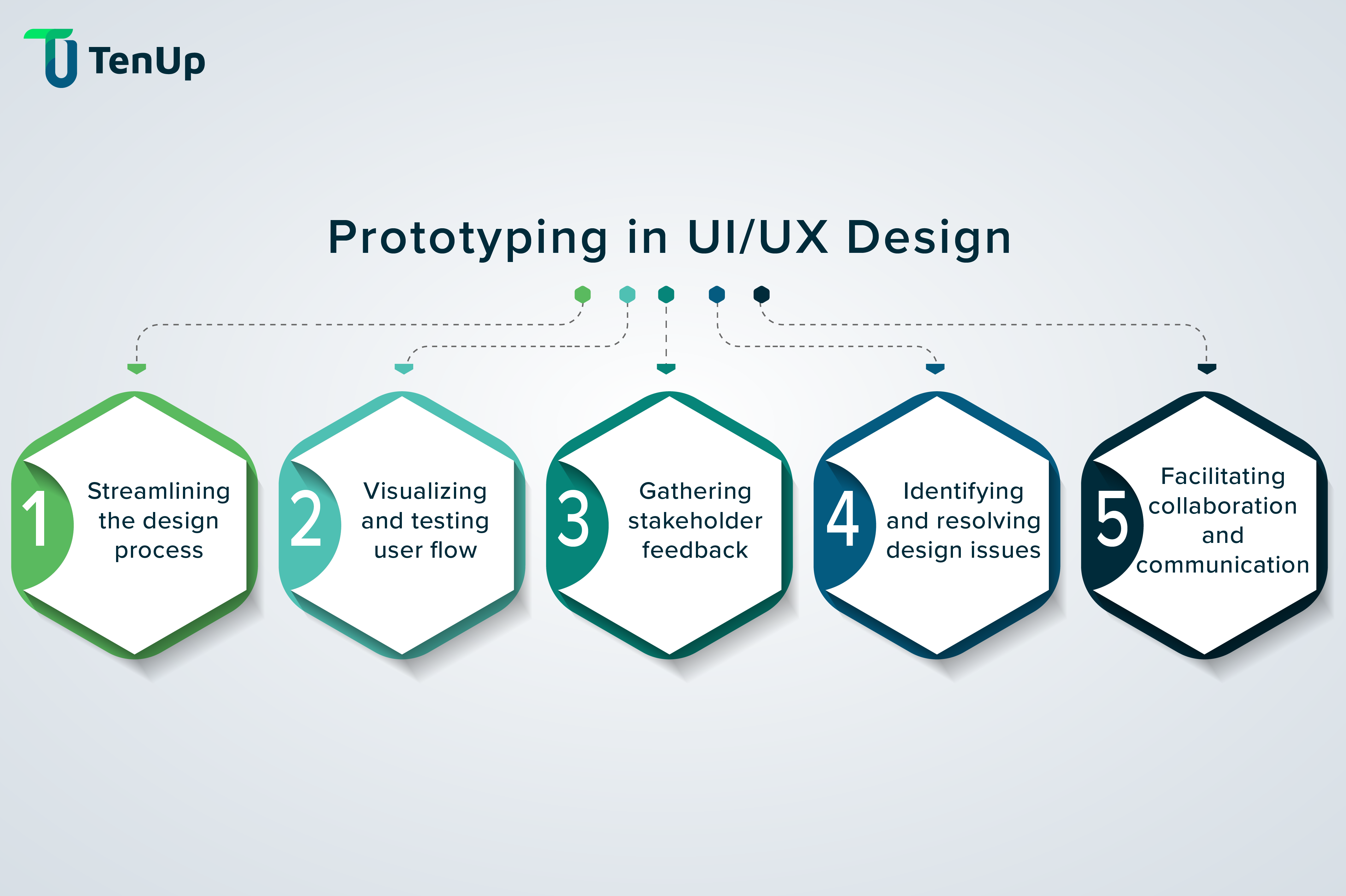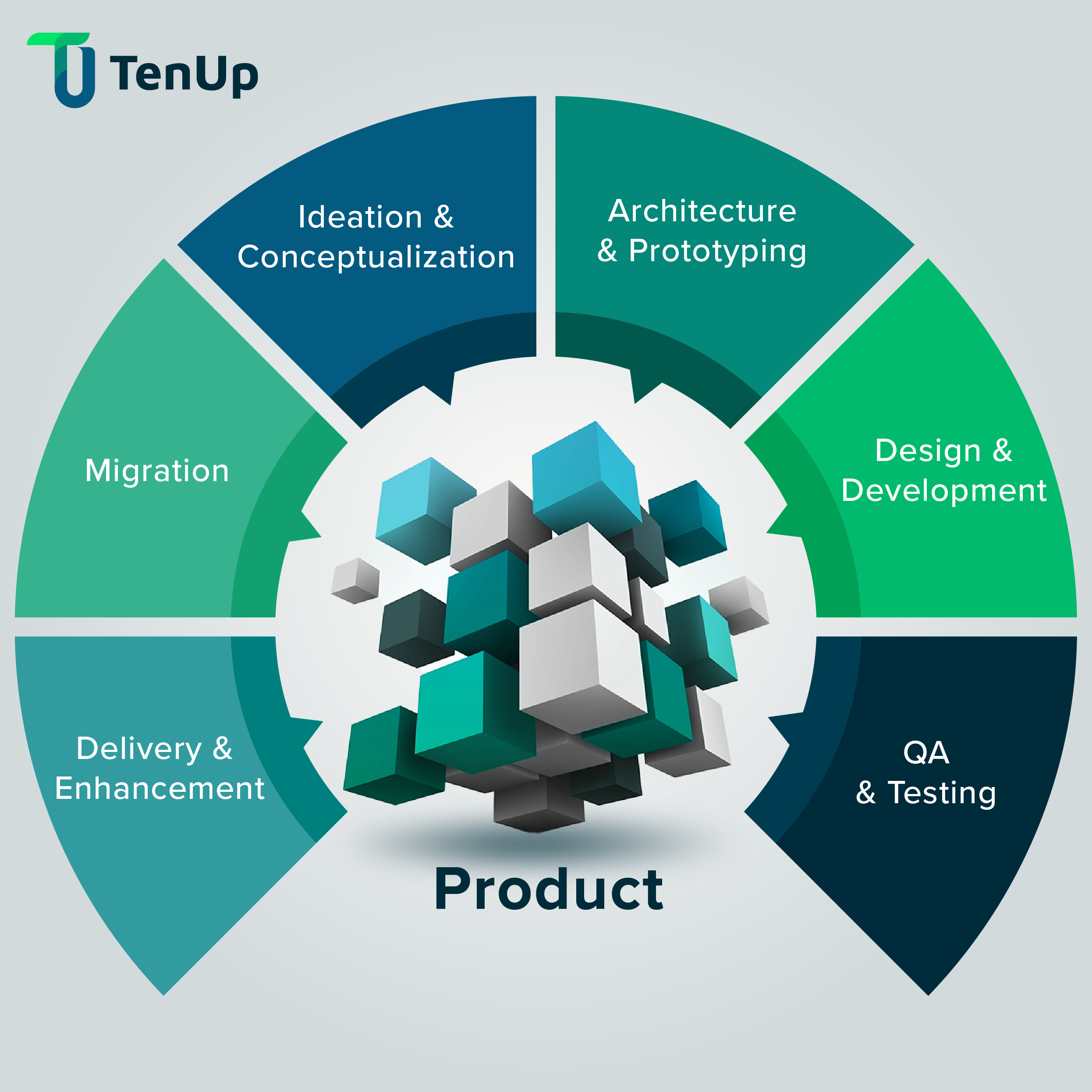The Key Benefits of Prototyping in UI/UX Design
Prototyping plays a crucial role in UI/UX design, offering a range of benefits that enhance the overall design process and user experience. Let's explore some of the key advantages:

Streamlining the design process: By giving the product a visual representation, prototyping helps streamline the design process. It enables designers to promptly explore several design options and iterate, ultimately saving time and effort. By building prototypes, designers can visualize their concepts, detect potential design errors, and make informed decisions early in the development cycle.
Visualizing and testing user flow: Designers can visualize and test the user flow by using prototypes to build interactive simulations of the user experience. By simulating user interactions, designers can identify usability issues, navigation challenges, and opportunities for improvement. This iterative process helps refine the user experience and ensures that the final product meets the needs and expectations of the target audience.
Gathering stakeholder feedback: Prototypes are a useful tool to get input from stakeholders, such as clients, users, and team members. It gives stakeholders the opportunity to contribute valuable feedback and insights early in the design process by providing a tangible representation of the product. As a result of this feedback loop, the final product is more successful since it helps to match expectations, solve issues, and make appropriate improvements.
Identifying and resolving design issues: Before spending a lot of money on software product development, design issues can be found and fixed through prototyping. Designers can find potential design errors, consistency issues, or usability problems by building functional prototypes.
Facilitating collaboration and communication: The use of prototypes as a communication tool promotes efficient teamwork between stakeholders, designers, and developers. Prototypes help in bringing everyone's understanding of the product into alignment and developing a shared vision by visualizing the design concepts. With the use of prototypes, team members can provide constructive feedback, suggest improvements, and work together towards a common goal.
Exploring the Different Types of Prototypes in UI/UX Design
Prototypes come in various forms, each serving a specific purpose in the product development process. Here are some examples of different types of prototypes:
Low-Fidelity Prototypes: Basic, simplified representations used to test early concepts and gather initial feedback.
High-Fidelity Prototypes: Detailed and visually polished prototypes that closely resemble the final product, offering a realistic user experience.
Interactive Prototypes: Prototypes with interactive elements, allowing users to engage with the product and simulate user interactions.
Rapid (Throwaway) Prototyping: Quick and disposable prototypes used for rapid experimentation and idea validation.
Evolutionary Prototyping: Iterative prototypes that progressively evolve based on feedback and user testing.
Incremental Prototyping: Prototypes built in stages, gradually adding features and functionality to refine the product.
Extreme Prototyping: Radical and experimental prototypes that push the boundaries to explore innovative design concepts.
Feasibility Prototypes: Prototypes developed to assess technical feasibility and identify potential challenges early on.
Live-data Prototypes: Prototypes integrated with real data, providing a realistic simulation of the product's functionality and performance.
How to Choose the Right Prototyping Tool for Your UI/UX Project
Selecting the right prototyping tool is essential for effective and efficient prototype development. Consider the following factors when choosing a prototyping tool:
Purpose and complexity: Analyze the purpose and complexity of your project. While other tools offer advanced functionality for intricate interactions or animations, some are better suited for making simple prototypes. To meet the needs of your project, decide on the level of quality and functionality needed.
Learning curve: Analyze the tool's learning curve. Take into account the time and effort necessary to master utilizing it. Pick a tool that aligns an easy transition into the prototype process and is compatible with the skill set of your team.
Collaboration features: When working as a team, collaboration is important. Search for prototype tools with functions like real-time collaboration, version control, and commenting. During the prototyping process, these features enable smooth teamwork and effective communication.
Cost: Evaluate the pricing structure of the prototyping tool. Determine if it aligns with your budget and the value it offers. Some tools offer free plans or trial periods, allowing you to explore their features before committing to a paid subscription.
Integration with design tools: Check to see if the prototyping tool works properly with any specific design tools you may already be using. A more efficient workflow is made possible by seamless integration, which enables the direct transfer of designs from the design tool to the prototyping tool, saving time and maintaining design consistency.
Best Practices for Effective Prototyping in UI/UX Design
Since prototyping is a crucial step in the software product development process, it it important to ensure successful outcomes by following these practices:
Define clear goals and objectives: Establish your goals and objectives in detail before you begin the prototype process. Recognize your goals for the prototype, whether they are to test a particular interaction, confirm a concept, or collect feedback from stakeholders. By setting specific goals, you can concentrate your efforts and make sure the prototype fulfills its intended function.
Start with low-fidelity prototypes: Start the prototyping process with low-fidelity prototypes like wireframes or sketches. Low-fidelity prototypes make it possible to quickly explore many design ideas and possibilities without spending a lot of time or money. Before going on to higher-fidelity prototypes, they enable you to iterate quickly, receive early feedback, and validate key components of the design.
Iterative design process: Implement an iterative strategy for prototyping. Adopt the concept of constant improvement rather than aiming for a flawless prototype straight away. Build prototypes iteratively, taking into account feedback and making incremental refinements in response to user testing and stakeholder input. Flexible iterative prototyping guarantees that the finished product efficiently satisfies user needs.
Usability testing and feedback: Conduct regular usability testing sessions with your prototypes. Invite representative users to interact with the prototype and observe their behavior and feedback. User pain points, usability issues, and areas for improvement can all be found through usability testing. Make sure that the design is iterated in accordance with user feedback to produce a user-friendly and intuitive final product.
Keep the end user in mind: Keep the end user in mind at all times while prototyping. Recognize the user's requirements, objectives, and pain areas. Consider their perspective when making design decisions. By empathizing with the end user, you can create prototypes that address their specific needs, resulting in a better user experience.
Conclusion: Mastering Prototyping for Successful UI/UX Designs
Prototyping bridges the gap between abstract concepts and tangible realities in the product engineering process. Whether it’s through rapid prototyping for quick validation or creating a functional prototype for detailed testing, this phase is critical to delivering successful products. With expertise and commitment to delivering exceptional software solutions, we offer comprehensive Product Engineering Services that can help you navigate the prototype development process effectively. Need well-designed, user-centric products that meet your customers’ expectations and drive business success? Contact us today!

